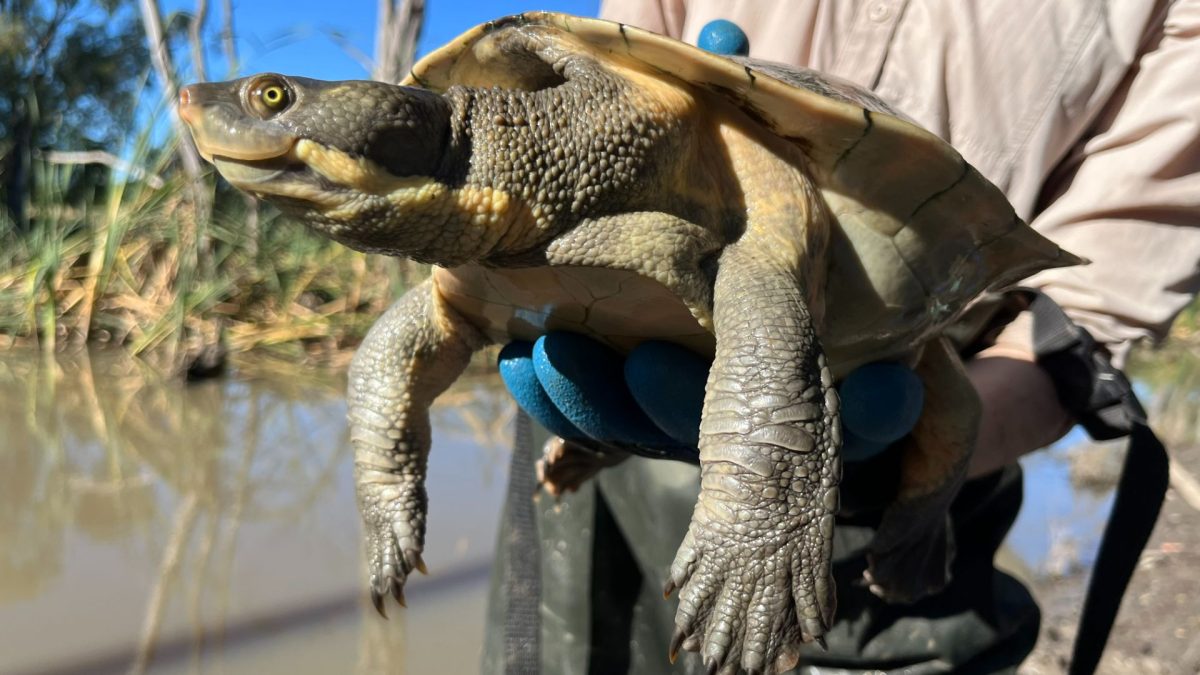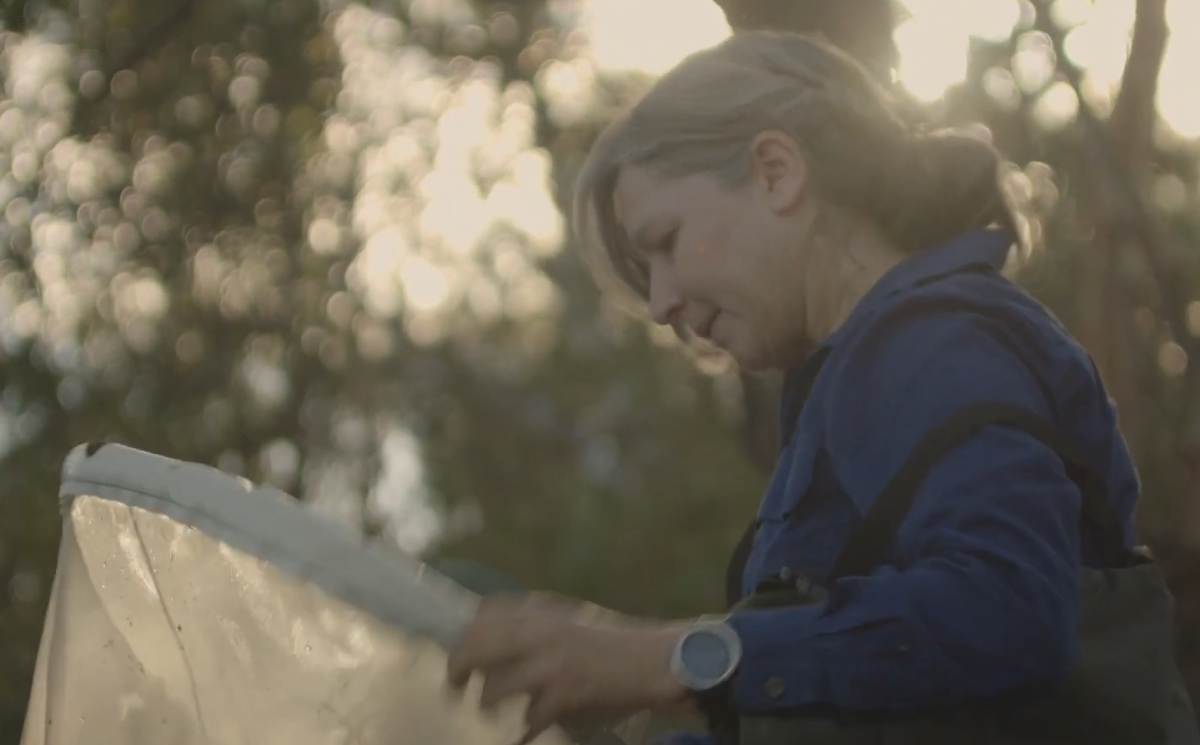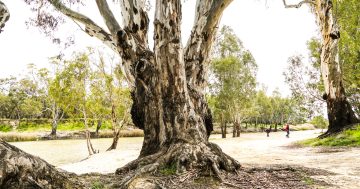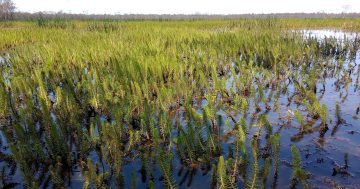
The Macquarie River turtle is one of three species benefitting from increased environmental flows in the Murray-Darling Basin. Photo: Supplied.
A group of researchers has highlighted the benefits of environmental water flows to the survival of turtle species of the Murrumbidgee wetlands.
The team from Charles Sturt University’s Murrumbidgee Monitoring Evaluation and Research (MER) Program has been tracking three species: the eastern long-necked turtle, the broad-shelled turtle and the Macquarie River turtle.
During the past couple of wet years, researcher Dr Anna Turner said they saw animals moving out of refuge habitats to take advantage of the abundant resources.
“The 2022 and 2023 flooding led to the reconnection of a number of key wetland sites to the main river channel in the Murrumbidgee catchment,” she said.
“Reconnection between wetlands and main river channels allows species to spread into the new habitat that is available.
“This provides greater feeding and breeding opportunities and healthier wildlife populations.”

Professor Skye Wassens says lagoons and wetlands have benefitted from environmental flows. Photo: CSU.
The program monitors the ecological response to Commonwealth environmental water delivery to wetlands along the Murrumbidgee and examines water quality, vegetation, waterbirds, wetlands as well as fish, frogs and turtles.
Professor Skye Wassens said the results demonstrated the importance of continued water flows to sustain wetlands and lagoons and the need for Commonwealth environmental water during drier times.
“We know that there are areas where turtles want to breed and where they will lay their eggs, and we can make sure that our baby turtles have that nursery habitat,” she said.
“We can also use environmental water to maintain some of these refuges during drought.
“When the permanent systems dry out, there can be quite a high turtle mortality because they become stranded before they are big enough to move and others, unfortunately, cross roads and they can be hit by vehicles.”
Professor Wassens said it was usually the long-neck turtle that motorists were likely to encounter on country roads.
“Often they’re going to breed and long-neck turtles can nest quite a long way from the water,” she explained.
“Sometimes they’re moving because the water body they might have been in has dried out and they’re anticipating there’s going to be a very nice temporary wetland with lots of food available somewhere else.”
Predation from foxes is the leading threat to turtle numbers, with a staggering 90 per cent of eggs likely to be taken.
“One of the big challenges with turtles through most of the Murray-Darling Basin is that we see a lot of big old adult turtles, but we don’t see very many young coming through the system,” Professor Wassens said.
“The foxes can smell where they’ve laid their eggs and they will go through and just dig up all of the nests along a section of a bank.
“There are real challenges in supporting these populations and ensuring that the next generation of turtles is there to take their place.”
Professor Wassens warned that the long lifespan of the water-dependent reptiles may be disguising just how fragile turtle populations are.
“The slow-responding species are often in a lot more trouble than we expect,” she said.
“Think in the 10 years we’ve been working, we’ve only seen about two young broad-shell turtles, where with other species we normally see a few little hatchlings each year, so it’s really something we need to protect.”
As well as providing enough water, Professor Wassens said protecting turtles and their eggs from foxes was important.
“There’s a few management interventions that we can do, like putting fox protection around nets or baiting for foxes during those breeding seasons,” she said.
“Floating islands and putting islands in dams is also a great way to provide some areas where they can get away from foxes and it helps both the birds and turtles.”
For more information on the fight to preserve our native turtles, you can visit the 1 Million Turtles page.









